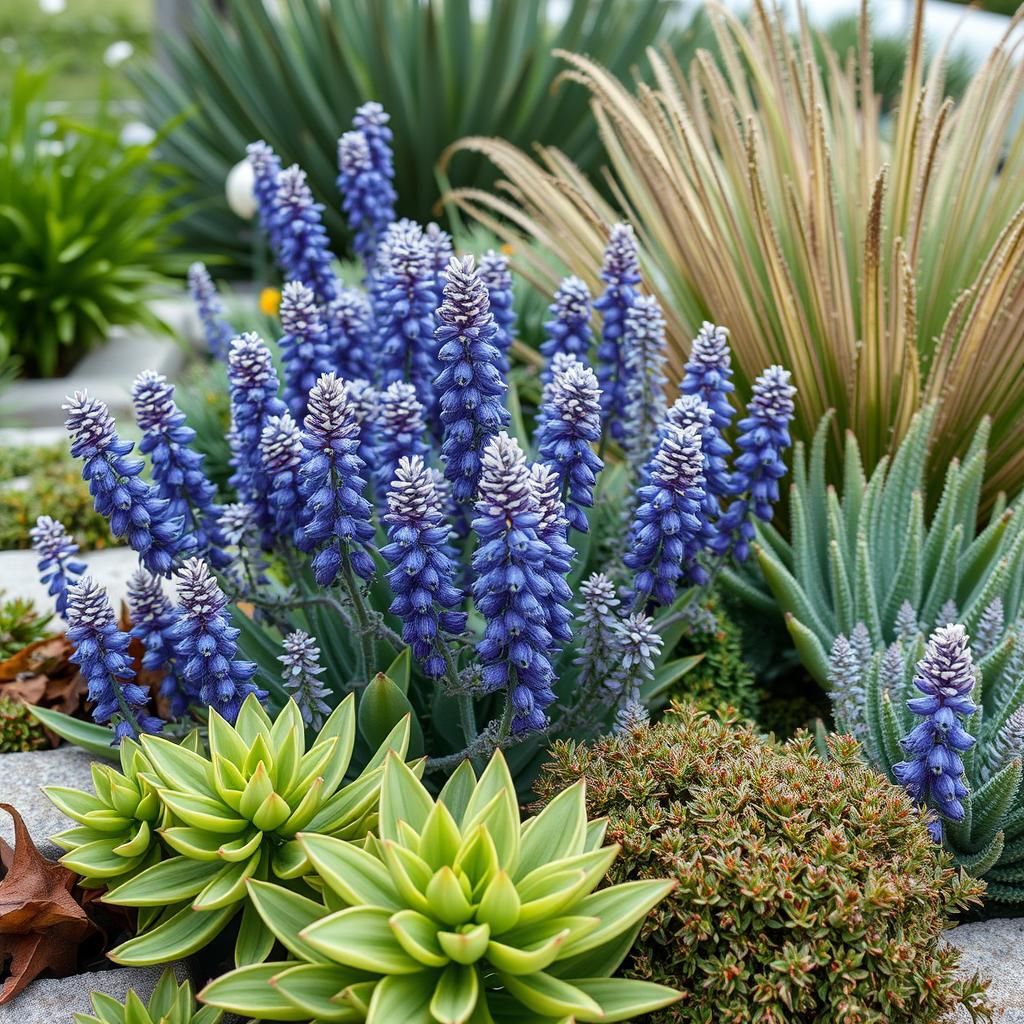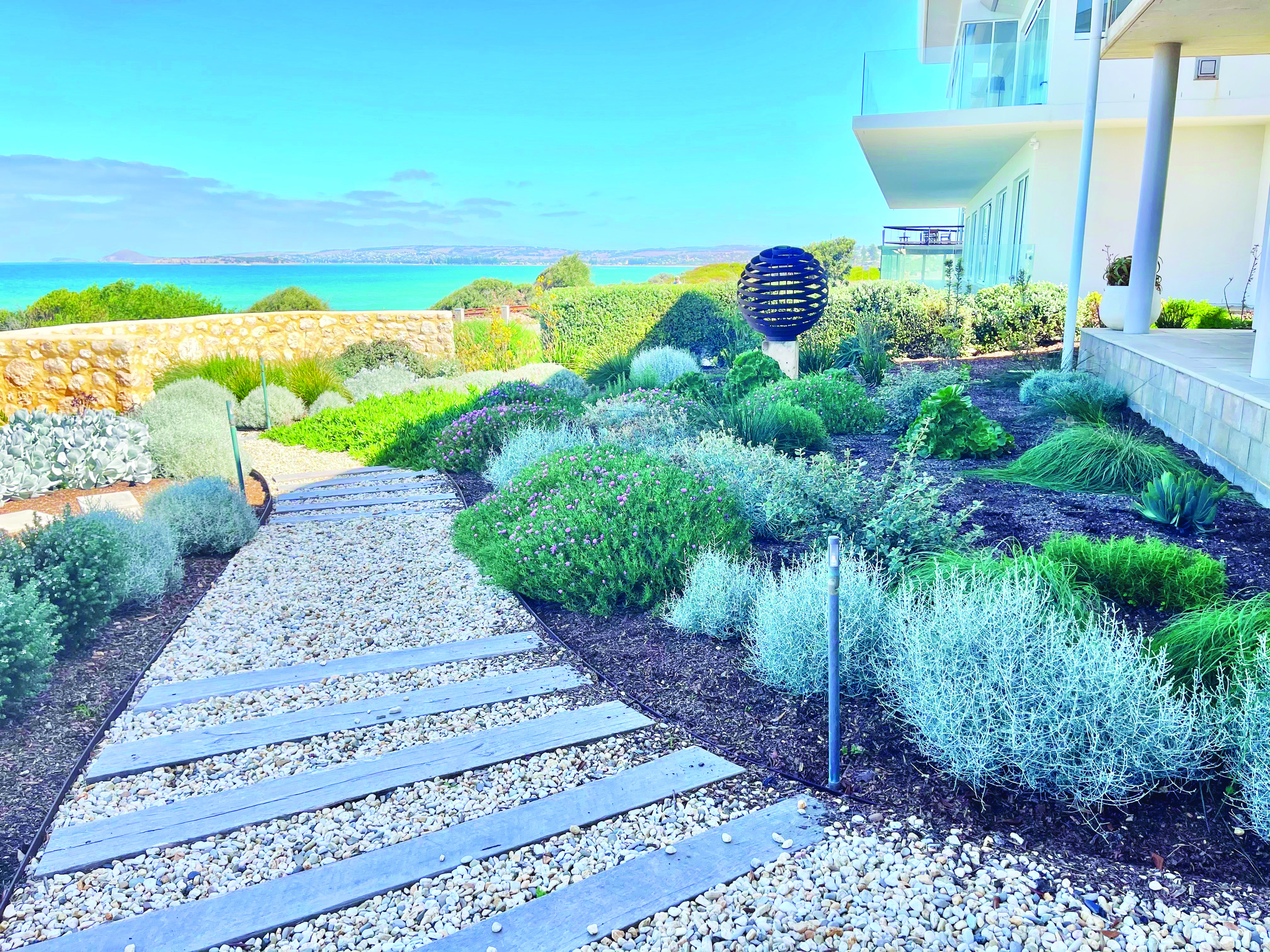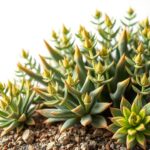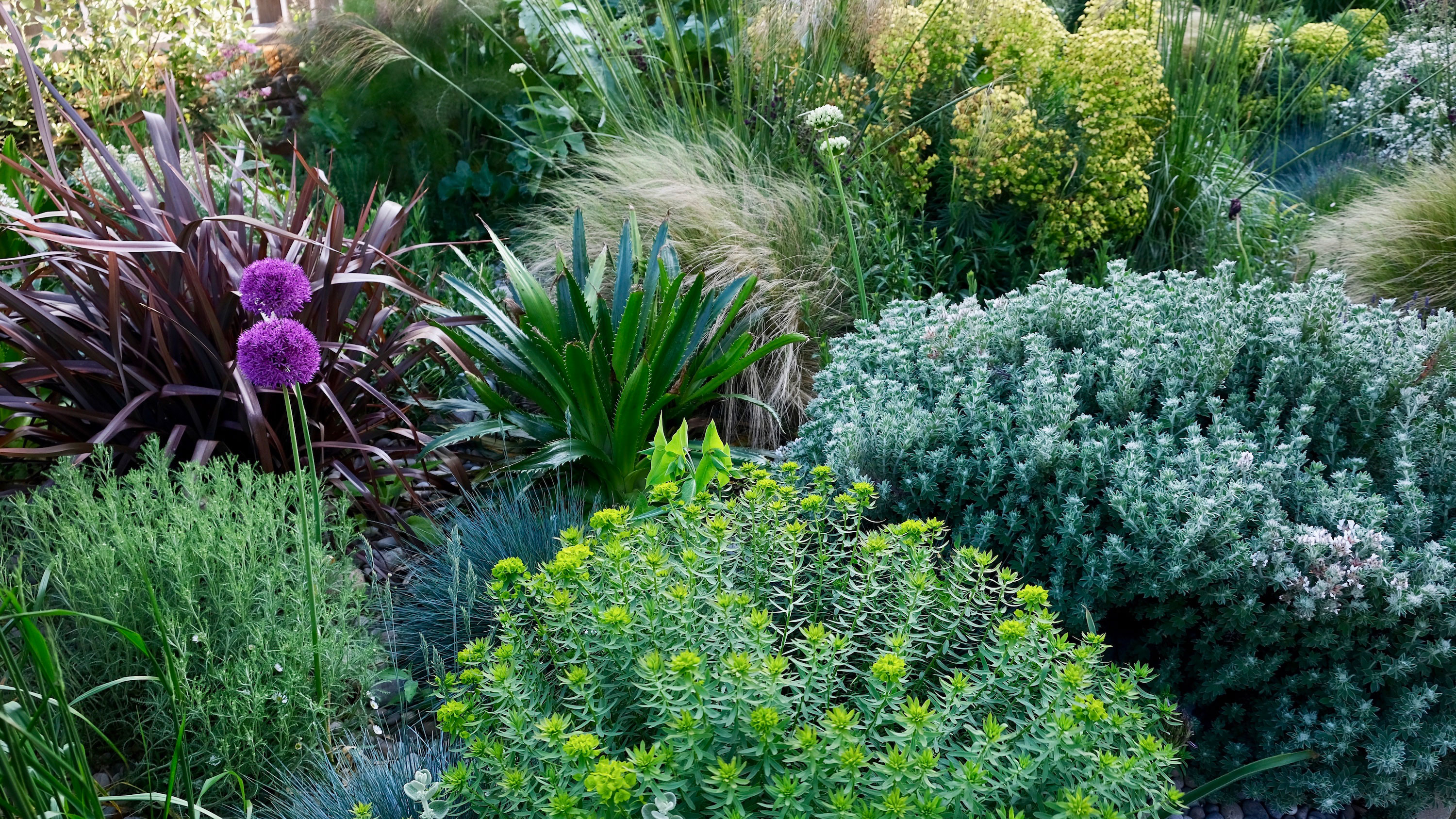10 Beautiful Coastal Plants for Landscaping: Enhance Your Shoreline Garden

Creating a picturesque shoreline garden is not just about stunning views but also about selecting the right plants that thrive in coastal environments. Coastal regions present unique challenges, such as salty air, sandy soils, and strong winds. However, the right selection of plants can enhance your landscape while providing resilience against harsh conditions. In this article, we will explore ten beautiful coastal plants that are perfect for landscaping. These hardy yet picturesque varieties not only add aesthetic appeal but also contribute to biodiversity, create natural habitats, and stabilize the soil. Transform your shoreline garden into a vibrant oasis with these coastal gems.
Coastal Plants for Landscaping
Coastal plants play a crucial role in enhancing the beauty and functionality of landscapes, especially in areas prone to salt spray, wind, and drought. These plants are specifically adapted to thrive in challenging coastal environments, which often involve poor soil conditions and extreme weather. By selecting the right coastal plants for landscaping, homeowners and landscape designers can create vibrant, sustainable outdoor spaces that require minimal maintenance while supporting local ecosystems. Moreover, their inherent resilience makes them an ideal choice for creating natural barriers against coastal erosion and providing habitats for wildlife.
Benefits of Coastal Plants
Coastal plants offer a myriad of benefits that extend beyond aesthetic appeal. These plants are generally more drought-resistant and can withstand saline conditions, making them perfectly suited for regions along the coast. Their deep root systems help to stabilize soil, reduce erosion, and improve water absorption. Additionally, many coastal plants serve as natural habitats for a variety of wildlife, including birds and insects, thus promoting biodiversity. Incorporating such plants in landscaping not only enhances the visual appeal but also contributes to environmental sustainability.
Types of Coastal Plants
There are several categories of coastal plants that landscape designers often consider. Native grasses, such as seaside goldenrod and beach grass, are excellent choices due to their robustness and ability to prevent soil erosion. Shrubs like sea oats and saltbush also add structure and visual interest to a landscape while thriving in salty air. Additionally, perennials such as coreopsis and lavender can provide vibrant colors and aromas throughout the growing season. Choosing a variety of these plants ensures a dynamic and resilient landscape design.
Design Considerations for Coastal Landscaping
When designing a landscape using coastal plants, several key factors should be taken into account. First, the exposure level of the site to wind and salt spray can significantly impact plant selection; plants that can tolerate high winds and saline conditions should be prioritized. Second, understanding microclimates within the landscape can help in selecting the optimum location for different plant species. Moreover, layering plants can create visual depth and offer protection to more sensitive species. Finally, it’s essential to implement proper drainage solutions to prevent waterlogging, which can damage even the most resilient coastal plants.
Maintenance Tips for Coastal Plants
Maintaining coastal plants requires a different approach compared to traditional landscaping. While these plants are generally low maintenance, regular checks for weeds and pests are crucial to their survival. Minimal watering is usually sufficient, particularly once the plants are established; however, during dry spells, it may be beneficial to provide supplemental water. Pruning and deadheading can improve flowering and overall plant health. Additionally, a layer of mulch can help retain soil moisture and suppress weed growth, making maintenance even easier.
Examples of Popular Coastal Plants
Some popular coastal plants well-suited for landscaping include Beach Strawberry, which produces edible fruits and vibrant green foliage, and Lantana, known for its colorful flowers that attract butterflies. Another favorite is the Sea Lavender, a resilient perennial that offers unique blooms and thrives in salty conditions. Wolffia and Ocean Spray are also exceptional choices, providing visual interest and contributing to the local ecosystem. Utilizing a combination of these plants can create a rich and diverse coastal landscape.
| Plant Name | Growth Habit | Hardiness Zone | Light Requirements |
|---|---|---|---|
| Beach Strawberry | Groundcover | 5-10 | Full Sun |
| Lantana | Shrub | 8-11 | Full Sun |
| Sea Lavender | Perennial | 4-9 | Full Sun |
| Wolffia | Floating Plant | All Zones | Full Sun |
| Ocean Spray | Shrub | 5-7 | Partial to Full Sun |
What is coastal style landscaping?

Coastal style landscaping is a design approach that draws inspiration from the natural beauty of coastal regions. It reflects the essence of seaside environments, incorporating elements that resonate with the coastal vibe, such as sandy textures, vibrant colors, and vegetation that withstands salt and wind. This style aims to blend the beauty of nature with functional outdoor spaces that can be enjoyed throughout the year.
Features of Coastal Style Landscaping
Coastal style landscaping is characterized by several distinctive features that emphasize a relaxed, airy atmosphere. Key elements include:
- Native Plants: Use plants that are native to coastal areas as they are naturally adapted to thrive in saline and windy environments.
- Soft Colors: A palette of soft blues, sandy beiges, and muted greens is often employed to mimic the soothing colors of the beach.
- Accessible Designs: Pathways and seating areas that encourage easy movement and relaxation are crucial, complementing the informal nature of coastal landscapes.
Plant Selection for Coastal Landscapes
Selecting the right plants is vital to achieving a successful coastal landscape. Ideal choices include:
- Salt-Tolerant Species: Plants such as beach grasses, sea oats, and certain succulents can thrive in coastal conditions.
- Low Maintenance Varieties: Opt for hardy, drought-resistant plants that require minimal care over time.
- Colorful Blooms: Incorporating flowering plants like hibiscus or bougainvillea can add vibrant splashes of color to the landscape.
Design Principles in Coastal Landscaping
Coastal landscaping embraces specific design principles that enhance the overall aesthetic and functionality of outdoor spaces. These principles include:
- Natural Flow: Create a seamless transition between the house and outdoor areas to promote a cohesive connection with nature.
- Layered Textures: Utilize various textures including sand, stone, and soft plantings to add visual interest and depth.
- Functional Spaces: Designate areas for relaxation, dining, or recreation that accommodate the lifestyle of those who inhabit the space.
Materials Commonly Used in Coastal Landscaping
The choice of materials plays a significant role in establishing the coastal theme. Common materials include:
- Natural Stone: Incorporate stones in walkways, patios, or retaining walls for an organic feel.
- Weather-Resistant Fabrics: Use durable outdoor furniture materials that can withstand the coastal climate.
- Wood Accents: Implement driftwood or reclaimed wood in structures like decks and fences for a rustic touch.
Maintenance Tips for Coastal Landscapes
Maintaining a coastal landscape requires specific care techniques to ensure plants stay healthy and the design remains intact. Recommended practices include:
See also:
- Regular Watering: While coastal plants are often drought-tolerant, they still need regular watering during dry spells.
- Weed Control: Monitor for invasive species that can thrive in the sandy soil, and take steps to control them.
- Seasonal Pruning: Prune back any overgrowth or dead foliage to encourage healthy growth and maintain the desired appearance.
What plants grow in coastal waters?
:max_bytes(150000):strip_icc()/1-8797c6f4df0441219c01b15c103d275c.jpg)
Coastal waters are home to a diverse array of plant life, each adapted to the unique conditions of these intertidal and subtidal zones. The plants that thrive in these environments are crucial to the health of marine ecosystems, providing habitat, food, and oxygen. Some of the primary types of plants found in coastal waters include:
1. Seagrasses: These flowering plants play a vital role in coastal ecosystems. They are rooted in the sediment underwater and are crucial for stabilizing the substrate, preventing erosion, and serving as a habitat for numerous marine species.
2. Algae: Various types of algae inhabit coastal waters, ranging from microscopic phytoplankton to larger macroscopic forms like kelp. Algae are essential for photosynthesis, producing significant amounts of oxygen and serving as a foundation for the marine food web.
3. Salt Marsh Plants: These plants are adapted to saline conditions and are typically found in the intertidal zone of coastal ecosystems. They provide critical habitats for wildlife and act as natural filters for pollutants.
4. Mangroves: Found in tropical and subtropical regions, mangroves are unique trees that thrive in saline coastal waters. Their extensive root systems provide stability to shorelines and serve as a nursery for various marine species.
5. Coral: While not a plant in the traditional sense, corals are marine animals that form symbiotic relationships with algae (zooxanthellae) and are found in coastal waters. These ecosystems support a rich diversity of life and are vital for coastal protection.
Seagrasses in Coastal Waters
Seagrasses are among the most important plants in coastal ecosystems, providing numerous ecological benefits. These flowering plants grow in shallow waters and can form extensive meadows that serve as habitat for a variety of marine organisms.
- Habitat Creation: Seagrass meadows provide shelter and breeding grounds for fish, invertebrates, and other marine wildlife.
- Water Filtration: They help improve water quality by trapping sediments and absorbing nutrients.
- Carbon Sequestration: Seagrasses play a role in mitigating climate change by capturing carbon dioxide from the water.
Role of Algae in Coastal Ecosystems
Algae are a diverse group of organisms that thrive in coastal waters, contributing significantly to the ecological balance. They come in various forms, ranging from microalgae to macroalgae like seaweeds.
- Oxygen Production: Algae are responsible for producing a substantial portion of the world’s oxygen through photosynthesis.
- Nutrient Cycling: They play a crucial role in nutrient cycling within marine ecosystems, helping to maintain the health of the environment.
- Food Source: Algae serve as a primary food source for many marine organisms, including fish and shellfish.
Salt Marsh Vegetation
Salt marshes are vital coastal habitats where various salt-tolerant plants thrive. These ecosystems are characterized by their unique vegetation and play significant roles in coastal protection and biodiversity.
- Flood Regulation: Salt marshes act as natural buffers against storm surges and flooding, protecting inland areas.
- Wildlife Habitat: They provide essential nesting and feeding areas for birds and other wildlife.
- Water Quality Improvement: Salt marsh plants help filter pollutants and improve water quality in coastal waters.
Mangrove Forests
Mangroves are a defining feature of tropical coastlines, characterized by their unique root systems that adapt to saline environments. These ecosystems are critical for both the environment and local communities.
- Shoreline Protection: Mangroves help reduce coastal erosion and protect against storm damage.
- Nursery Habitat: They serve as nurseries for various marine species, including commercially important fish.
- Biodiversity Hotspots: Mangrove forests support a rich diversity of species, contributing to overall marine biodiversity.
Coral Reefs and Their Relationship with Coastal Plants
Coral reefs are vital components of coastal ecosystems, supporting a great variety of life. Although corals are animals, they rely heavily on symbiotic relationships with algae for nutrition.
- Habitat Provision: Coral reefs provide habitat for thousands of marine species, making them some of the most biodiverse ecosystems on the planet.
- Coastal Protection: They act as natural barriers against waves, protecting coastlines from erosion.
- Tourism and Economy: Coral reefs support tourism and fisheries, contributing to local economies.
What is the best coastal evergreen?

The best coastal evergreen is often considered to be the Eastern Red Cedar (Juniperus virginiana). This species thrives in coastal environments and is favored for its tolerance to salt and wind, as well as its attractive foliage and beneficial ecological role.
See also:
Characteristics of Eastern Red Cedar
The Eastern Red Cedar is known for its unique attributes that make it suitable for coastal settings.
- Tolerance to Salt: This evergreen can withstand the saline conditions found near the ocean.
- Wind Resistance: It is resilient against high winds, making it an ideal choice for coastal areas.
- Aesthetic Appeal: The tree features beautiful, aromatic wood and attractive blue-green foliage throughout the year.
Ecological Benefits
The Eastern Red Cedar plays a significant role in the ecosystem of coastal regions.
- Wildlife Habitat: It provides shelter and food for various bird species and other wildlife.
- Erosion Control: The roots help stabilize soil, preventing erosion in coastal environments.
- Air Quality Improvement: As an evergreen, it helps improve air quality by absorbing pollutants.
Best Growing Conditions
Understanding the ideal conditions for cultivating Eastern Red Cedar can enhance its growth and longevity.
- Soil Requirements: Prefers well-drained, sandy or loamy soils with a neutral pH.
- Sunlight: Thrives in full sun but can tolerate partial shade.
- Water Needs: Once established, it is drought-tolerant but needs regular watering during the first few years.
Maintenance Tips
Proper maintenance ensures that the Eastern Red Cedar remains healthy and vibrant.
- Pruning: Light pruning can help maintain its shape and remove any dead or diseased branches.
- Pest Management: Monitor for pests such as bagworms, and use organic pesticides if necessary.
- Mulching: Apply mulch around the base to retain soil moisture and reduce weeds.
Common Uses of Eastern Red Cedar
The Eastern Red Cedar is not only valued for its ecological benefits but also for its practical uses.
- Landscaping: Popular in gardens for its ornamental qualities.
- Wood Products: Its wood is prized for furniture and shingles due to its resistance to decay.
- Essential Oils: The tree's wood can be distilled into essential oils for various applications.
What plants are good for beach houses?

Living by the beach presents unique challenges for gardening, including salt spray, sandy soil, and strong winds. However, some plants are particularly well-suited for coastal environments, thriving despite these factors. Here is a selection of plants that are ideal for beach houses:
Coastal Dune Grass
Coastal dune grass is essential for stabilizing sand dunes and preventing erosion. Its deep root systems help hold the soil together, which is crucial in sandy environments. This type of grass not only aids in coastal preservation but also adds a soft, natural aesthetic to beach properties.
- Stabilization: Prevents soil erosion and maintains the integrity of sand dunes.
- Low Maintenance: Requires little care and can survive tough coastal conditions.
- Wildlife Habitat: Provides shelter for various coastal animals.
Beach Strawberry (Fragaria chiloensis)
The beach strawberry is a hardy plant known for its ability to thrive in sandy soils and tolerates salt spray. This perennial produces sweet, edible fruits that are not only a delight for humans but also attract birds and other wildlife. It’s often used as ground cover, helping to suppress weeds and stabilize soil.
- Edible Fruits: Produces delicious strawberries that enhance garden diversity.
- Ground Cover: Helps in preventing weed growth and soil erosion.
- Attracts Wildlife: Ideal for attracting birds and beneficial insects to the garden.
Sea Oats (Uniola paniculata)
Sea oats are an iconic coastal plant known for their tall, graceful appearance and ability to thrive in sandy habitats. They play a crucial role in stabilizing coastal dunes and preventing erosion. The seeds of sea oats are also a food source for local wildlife, contributing to biodiversity in the area.
- Dune Stabilization: Roots help hold sand in place, preventing erosion.
- Wildlife Support: Seeds serve as a food source for birds and other animals.
- Elegant Aesthetic: Adds visual interest with its tall, flowing grass-like appearance.
Beach Holly (Ilex crenata)
Beach holly is an evergreen shrub that is particularly valued for its resistance to salt and drought. It has a dense growth habit and can be used as a hedge or foundation plant in coastal gardens. Its shiny leaves and small berries can add visual appeal and attract birds.
- Evergreen Foliage: Provides year-round greenery, enhancing the landscape.
- Salt Tolerance: Thrives in salty environments without damage.
- Attractive Berries: Produces small berries that are appealing to birds.
Succulents for Coastal Areas
Succulents are a great option for beach houses due to their ability to store water and withstand dry conditions. Many varieties can handle salty air and can add a unique look to coastal landscapes. They require minimal care, making them ideal for beachside environments.
- Water Efficiency: Their ability to retain moisture makes them suitable for arid coastal conditions.
- Diverse Varieties: Comes in numerous shapes and colors, offering unique landscaping options.
- Low Maintenance: Requires minimal watering and care, perfect for the beach lifestyle.
Questions from Our Readers
What are the benefits of using coastal plants for landscaping?
Using coastal plants for landscaping offers numerous benefits, including their ability to withstand salt, wind, and drought conditions typical of coastal environments. These plants are often low-maintenance and can help prevent soil erosion, making them ideal for stabilizing dunes and coastal areas. Additionally, they contribute to local biodiversity by supporting various wildlife species.
How do I choose the right coastal plants for my garden?
When selecting coastal plants for your garden, consider factors such as the climate, soil type, and sunlight availability in your space. Opt for species that thrive in your specific conditions and are suited for your desired aesthetic. Consulting with local nurseries or a landscape designer familiar with coastal flora can also provide valuable guidance.
See also:
Are coastal plants suitable for inland landscaping?
While many coastal plants are adapted to sandy, saline soils, some varieties can thrive in inland landscapes as long as their specific water and sunlight needs are met. However, it is essential to ensure that they do not become invasive in these new environments, so research and site-appropriate selection are crucial.
How can I maintain coastal plants in my landscape?
Maintaining coastal plants involves regular practices such as watering, pruning, and monitoring for pests. Since many of these plants are drought-resistant, less frequent watering may be necessary once established. Additionally, applying mulch can help retain moisture and suppress weeds while providing seasonal plant care to promote healthy growth.

If you want to read more articles like 10 Beautiful Coastal Plants for Landscaping: Enhance Your Shoreline Garden, we recommend you check out our Landscaping category.
Leave a Reply
Related Articles